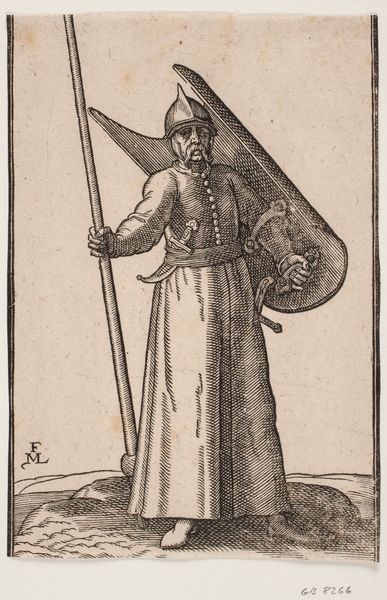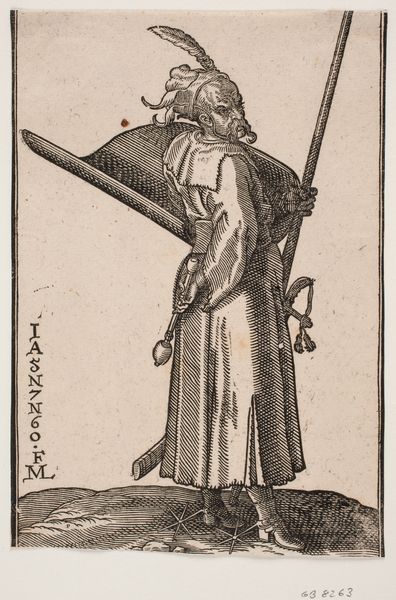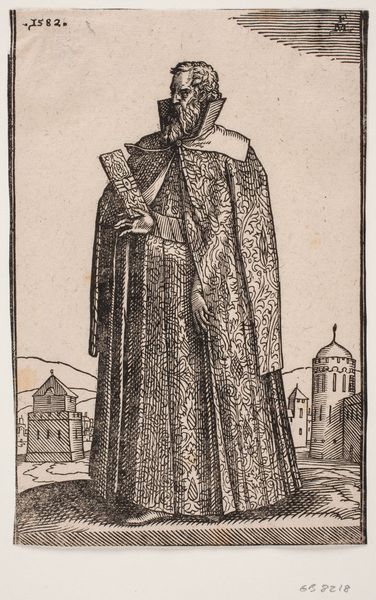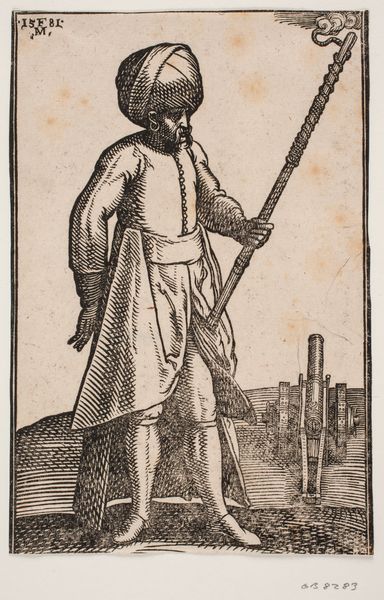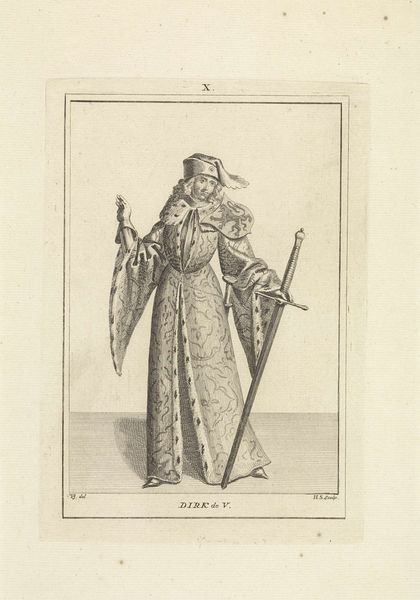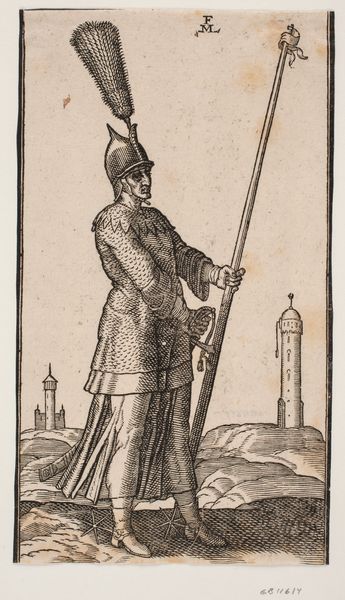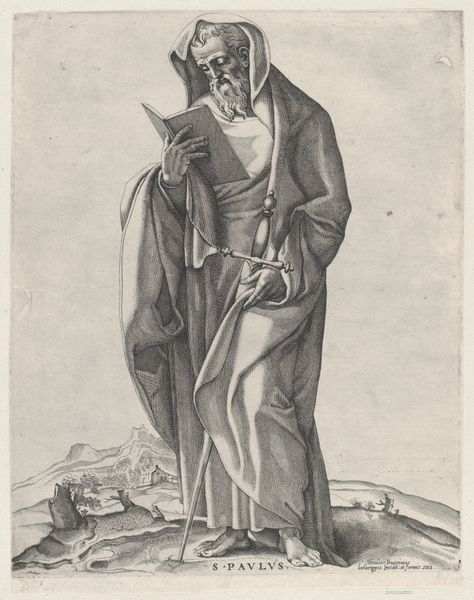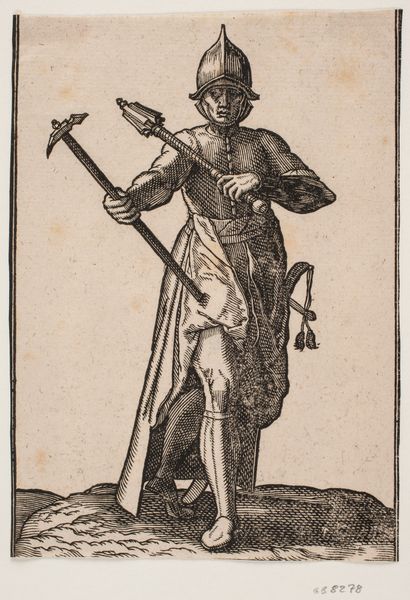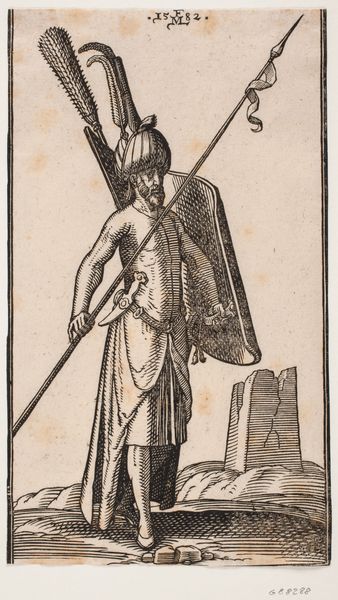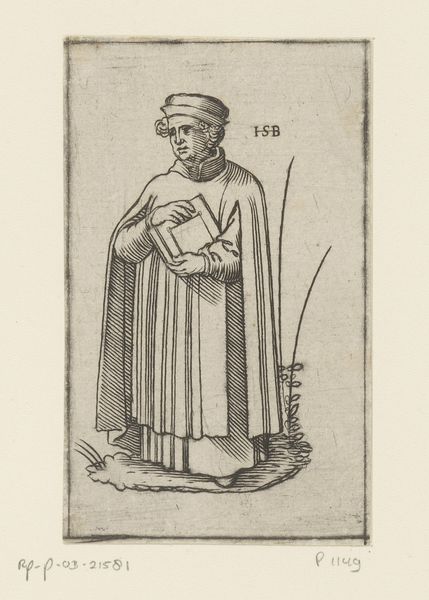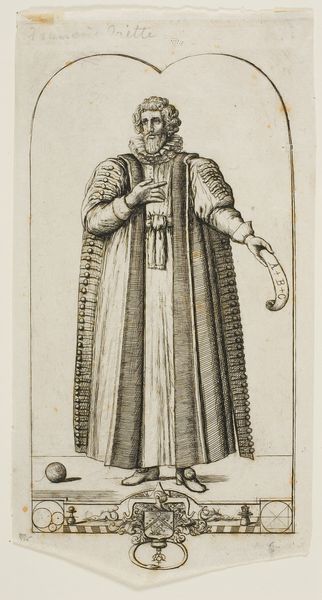
Stående, kappeklædt soldat, frontalt set; i h. nedaddrejede hånd en stridskølle, i v. en stridshammer; på hælene sporer 1576
0:00
0:00
print, woodcut
#
portrait
# print
#
mannerism
#
figuration
#
woodcut
#
history-painting
Dimensions: 196 mm (height) x 132 mm (width) (bladmaal)
Curator: Let's turn our attention to this print, “Standing, cape-clad soldier, seen frontally” created by Melchior Lorck in 1576. It’s a woodcut, currently residing at the SMK in Copenhagen. Editor: He looks wearied, doesn’t he? The texture of his face—those deep lines— speak to a history worn visibly. And his grip, ever so slight on those brutal-looking weapons. Curator: Exactly! Lorck masterfully uses the woodcut medium to emphasize the weight of symbols, imbuing this soldier with cultural memory. Consider his attire – the feathered turban, the heavy cloak – each element alludes to a specific identity, now blurred with the passage of time. Editor: Identity is at the crux of this piece for me, too. The stance, presented "frontally" as the title indicates, appears as more a surrender than strength, no? The landscape is desolate; the crumbling tower behind him implies societal decline. Perhaps a critical commentary about militarism? Curator: That is a great perspective. Think also of his weaponry – the battle hammer and flanged mace – as not just instruments of war, but symbols of authority and, dare I say, brutality. These recurring symbols throughout history carry cultural baggage that shape our present. Editor: And how that power is displayed! Lorck's work acts as a reminder of whose histories get told, of how frequently marginalized figures get overlooked. Who did this soldier oppress, and who celebrated that power? Curator: Well, he has been described as standing. One can read the image also from a less contemporary perspective. This is also where Mannerism comes into play, a stylistic tension and dramatic flair that gives the work more narrative force. Editor: I do concede on that note – that flair works in visual shorthand to glamourize power – a dangerous and yet consistent artistic tendency worth discussing. Curator: Precisely, it provokes continued contemplation. What might be an entirely obvious icon in one epoch can grow opaque, even controversial, in the next. Editor: A poignant reminder of art’s power to engage and challenge us through centuries of socio-political change.
Comments
No comments
Be the first to comment and join the conversation on the ultimate creative platform.
